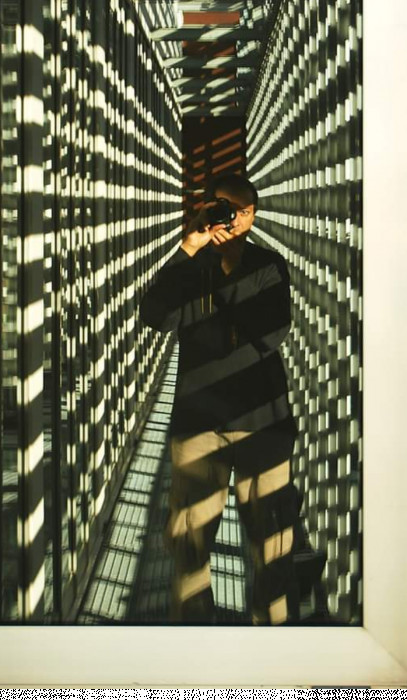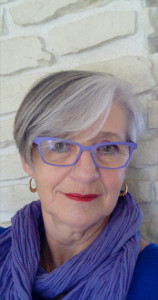
Discover the contemporary work of François RIVIÈRE

“The Torn Poster” is a photographic exhibition by François Rivière, a founding member of the photographic agency “AGENCE SOLARIS” in 2013, which presents 28 colour exhibition prints (HR) in 60 X 90 cm format, glued on 1 mm aluminium. The shots cover a period from 1991 to 2013, and were taken mainly in France (Toulouse, Paris, Bayonne), but also in Italy (Milan), the former Yugoslavia (1995- Split in Croatia) and Germany (Berlin). Some of these images are accompanied by “off-screen” whose function is to restore the urban settings in which they were born.
The authenticity of each of the original photographs is guaranteed by the triple ARTtrust certification, and they are numbered from "No. 1 of 25" to "No. 25 of 25". The unit price of these images is 500 Euros including tax. This project, text and image, was pre-selected in 1999 for the entrance exam of the Academy of Rome (Villa Medici, Delegation for Plastic Arts of the Ministry of Culture and Communication), photography section. The first exhibition took place at the Toulouse bookstore “Ombres Blanches” from March 6 to April 7, 2000 as part of the “Forum de l’Image” in Toulouse. An exhibition of the total project “L’affiche dèchèrée” (photographs, text, music and slide projection) was held at the Basque and History Museum of Bayonne from May 2 to 31, 2011. The photograph “Hemen” bearing the number 1 of 25 was acquired by the museum management, while the one bearing the number 2 out of 25 was offered to the private patron who had financed this event.
François Rivière
25 rue Victor Hugo
64100 Bayonne
[hidden for your safety]
[hidden for your safety]
“The Torn Poster”
“In 1969, all the newspapers published the photograph taken from
the space pod on its journey to the Moon; it was the first
photograph in the world. (…)
It was not only the image of the world but the image that
contained all the images of the world: graffiti, frescoes,
paintings, prints, works, photographs, books, films (1) ".
My images tell a story, that of all the images
that they contain, from the most intimate to the most commercial,
Much more than they show us this or that other reality
of the world. Now the necessity to find one's way in the
overabundance of representations and messages, is
precisely the foundation of photography as I
practice it. This is why I decided to move towards the
research and capture of a "synthetic image", used to
invent, to feel, to tell, and whose reading would be for everyone, personal, unique, and precious.
By photographing posters, I am, in short, only
reproducing one image by another. However, by choosing
to photograph those that are torn, partially destroyed
or made illegible by their concentration in a reduced space,
I redefine their contents, I modify their meaning and I propose
another reading of these compositions, taken as urban traces.
By going to meet these compilations of posters that put
color wherever they are placed, I restore in a way
the event pigmentation of the city. From this
application to traveling through cities on foot, to surveying them, to in
taking the full measure, sometimes going so far as to get lost in it in order to
grasp all the messages, a more
intimate contact with a hidden reality was born.
These torn posters speak to us because they use a
code that corresponds, although barely shifted, to one of our
intimate codes. They touch us because they represent an
accumulation of visual universes that pave the way for our desires.
They channel our dreams by offering us a
frozen representation. All our emotions can find an echo here in
the insinuating penetration of the messages they convey. And this
clandestine impregnation works all the better because these
messages are in agreement with the deep and
unconscious structure of our modern imagination. We are then
no more masters of our judgment than of our emotions.
Took out of their contexts, proposed with another staging
and a new model, these posters switch to a
new function which will become more pictorial and poetic.
Originally advertising, cultural or political, these large
posters are directly linked to current events, and carry within them
the ephemerality of the event they announce. They represent
a link in our contemporary history and remain in
definitively the living memory of a specific era. But their
random mix, without representing a fair synthesis of human
activity, can nevertheless claim to constitute an attempt
at writing containing a new vision of the world. The choice of
framing at the time of shooting sets the limits of the discourse
and of the symbols intrinsic to the image.
It participates in the general homogenization as well as the
internal oppositions and imbalances specific to each shot.
It is in this conflicting relationship of tensions contained in
the image that a semantic construction finds its place. From this
uncertain quest arises my real-time search for
the "relevant accident". It is up to me to flush it out where it will be most successful. These
torn posters give to see and to hide, to understand and to
imagine. But the interpretation of what the image contains will remain
singular to each one of us.
These panels of torn posters contain an unfinished painting,
an unforeseen, fleeting and evolving work. Each deterioration
or new layer being able to modify it, it is then a question of identifying
a subject having a body that comes together in dismemberment
and disorder. It is by relying on the inventiveness of chance,
that the tear creates a certain unity in a conglomerate
of posters. Keeping a lasting record of their fleeting
existence amounts to fighting against the time factor, the inescapable
destroyer of one's own creations. By calling photographic
devices “clocks” see (2) ", Roland Barthes
determined their essential mission: to stop the action of time.
It is a question of giving permanence to the present time in order to
preserve in an unalterable way what until then was part of the
fleeting, the transitory. This momentary faculty of suspending
time contributes to nourishing in us this feeling of nostalgia for
what was and will no longer be.
As an informed art critic, Charles Baudelaire wrote about what he
called the painting of modern morals: " The pleasure we
derive from the representation of the present is due not only to the
beauty with which it can be invested, but also to its essential quality
of present (3) ». 0r these torn posters are a metaphor for
time passing. By covering, stratification, they are
comparable to the geological layers of the earth.
They become the very structure of the legibility of time.
My photographs offer a translation of this and through them,
it is a speech that the walls operate.
It is to account for this journey in the thickness of
things that the matter of the poster takes on such a primordial relief
in each of my images. Without these superpositions, these
accumulations of papers, textures and diverse tones,
there could be no hidden reading, no meaning to discover
behind these panels of deteriorated posters. A poster can
meet another in a fortuitous way when the latter is located
voluntarily outside the frame, on the margins of the locations assigned to it, when it returns to the wild state, outside the authorized
circuit. Once brought together, they can then mix,
overlap, partially cover each other. Only then will their
new narrative function become perceptible, convincing and
shareable. Moreover, it is by listening to the murmur of these
crossed-out walls, by observing these panels of crumpled,
amalgamated drafts, that it seems to me to read unfinished scenarios,
secret meetings, to construct the reveries of a stroller,
to detect associations of unusual ideas.
In a more raw aspect but nevertheless with a rendering quite
close to photomontages or certain collages, pieces
of images are thus welded to others. Creating
anachronisms, distorting reality, they flirt with
caricature by bringing together different scales, intentions,
values. It is then to a game of exquisite corpse
(prized by the surrealists and the situationists), that these
torn posters invite us. By insinuating themselves into our imagination,
they invent a narrative framework echoing their
random encounters. In this kaleidoscope of information
deprived of thematic classification, bridges are built
allowing us to imagine a fable or a story. Each of these
photographs is a proposed outline for the scenario
of a story that remains to be invented. When it is a piece
of an isolated poster, the redundancy of the text on the image and the heaviness
of the written commercial arguments have disappeared or remain illegible.
This feeling of emptiness (in a space usually closed and
saturated), is reinforced precisely by this absence of a frame for
the poster. The wall on which it is stuck decides its new
dimensions. It becomes a pure figure of style, a sort
of Western ideogram.
In this urban frenzy of activity human,
a composition of torn posters could be assimilated
to poetry in prose.
Identical, it uses everyday words but it is in
their arrangement and phrasing that the poetic image
is revealed in all the expression of its beauty.
On the contrary, poetry in verse would represent the collector's poster
put under glass and completely foreign to the hazards of the hoardings
of construction sites. In the midst of this profligacy of advertising
means, of an overproduction of which wild posting only
represents the surplus, I track down those which, once brought together
reveal a true formal unity. It is a treasure hunt
strewn with signs and omens whose correct interpretation
can allow me to reach the secret places of their residences.
François Rivière – Bayonne 2019 –
(1): LUIGI GHIRRI – KODACHROME –
ÉCONTRE-JOUR EDITION 1978.
(2) : ROLAND BARTHES - LA CHAMBRE CLAIRE –
ÉGALLIMARD EDITION 1980.
(3) : CHARLES BAUDELAIRE - THE PAINTER OF MODERN LIFE -
The artistic work of François RIVIÈRE
Newly added works
Torn poster



























































































